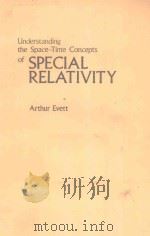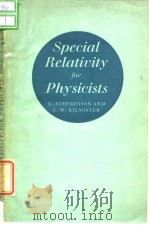《Relativity:The Special Theory》
| 作者 | 编者 |
|---|---|
| 出版 | 未查询到或未知 |
| 参考页数 | 450 |
| 出版时间 | 1956(求助前请核对) 目录预览 |
| ISBN号 | 无 — 求助条款 |
| PDF编号 | 812589188(仅供预览,未存储实际文件) |
| 求助格式 | 扫描PDF(若分多册发行,每次仅能受理1册) |

CHAPTERⅠ.THE SPACE-TIME CONTINUUM AND THE SEPARATION BETWEEN EVENTS1
1.Concepts1
2.Events and particles5
3.Space-time6
4.The assignment of space-time coordinates7
5.Notation8
6.World lines and space-time diagrams9
7.The motion of a material particle10
8.Past,present and future11
9.Standard clocks14
10.The separation between events15
11.The fundamental quadratic form16
12.Finsler space-time and Hamiltonian methods19
13.Space-time as a Riemannian space22
14.Measurement of spacelike separation24
15.The physical meaning of orthogonality26
16.Distance between particles29
17.Rigid rods30
18.The world lines of free particles32
19.The special and general theories of relativity34
20.Rigid motions36
CHAPTER Ⅱ.INTRODUCTION TO THE SPECIAL THEORY38
1.Basis of the special theory of relativity38
2.Finite separations39
3.How to draw a straight line in space-time42
4.Pairs of straight lines in space-time,parallel and skew44
5.The physical meaning of the special coordinates47
6.Splitting space-time into space and time49
7.Galileian frames of reference52
8.Proper time and the speed of light54
9.Minkowskian coordinates56
CHAPTER Ⅲ.SPACE-TIME DIAGRAMS59
1.Some elements of the geometry of flat space-time59
2.Orthogonal projections61
3.space-time diagrams63
4.Space-time diagram of the null cone64
5.M-geometry and E-geometry65
6.Pseudospheres67
CHAPTER Ⅳ.THE LORENTZ TRANSFORMATION69
1.The general Lorentz transformation69
2.Restrictions on Lorentz transformations73
3.The two ways of interpreting transformations75
4.Geometrical meaning of the Lorentz transformation76
5.Eulerian angles and pseudoangles79
6.Lorentz transformations regarded as rigid body displacements84
7.The Lorentz 4-screw86
8.Reduction of any Lorentz transformation to a 4-screw90
9.Correspondence between triads of null rays and unit orthogonal tetrads94
10.Lorentz transformations represented by arbitrary transformations of triads of null rays98
11.Spinors103
12.The two spin transformations corresponding to a given Lorentz transformation107
13.The simple Lorentz transformation between two frames of reference110
14.Lorentz transformations with Hermitian (or symmetric) matrix114
CHAPTER Ⅴ.APPLICATIONS OF THE LORENTZ TRANSFORMATION118
1.Aparent contraction of a moving body and apparent retardation of a moving clock118
2.Snapshots120
3.Space-time diagrams of contraction and retardation122
4.Composition of velocities126
5.The velocity 4-vector and the acceleration 4-vector130
6.Transformation of a wave motion133
7.Reflection at moving mirrors138
8.Fresnel's convection coefficient142
9.Aberration146
10.Teh expanding universe in special relativity150
11.The red-shift152
12.Luminosity and distance153
13.The dependence of red-shift on apparent distance and the age of the universe156
14.The Michelson-Morley experiment158
CHAPTER Ⅵ.MECHANICS OF A PARTICLE AND COLLISION PROBLEMS163
1.Force.Action and reaction A philosophical digression163
2.Particles and mass165
3.Equations of motion166
4.Is proper mass constant?167
5.Interpretation of the equations of motion168
6.Motion under a constant relative force and in a constant magnetic field171
7.Momentum 4-vector for a photon172
8.Collisio and disintegration problems173
9.Space-time diagrams of collisions176
10.The triangle inequality in space-time177
11.Mass-centre reference system.Release of energy in disintegration180
12.Some numerical values182
13.Inelastic collision of two particles183
14.Disintegration of one particle into two185
15.Emission of a photon from an atom187
16.The sameness of photons189
17.The emission and absorption of a photon191
18.The Compton effect193
19.The annihilation and creation of matter199
20.Elastic collisions205
CHAPTER Ⅶ.MECHANICS OF A DISCRETE SYSTEM208
1.Discrete and continuous systems208
2.Impulses and continuous forces209
3.Internal impulses210
4.The conservation of 4-momentum for a system213
5.Angular momentum and its conservation216
6.The mass-centre of a system218
7.Intrinsic angular momentum of a particle220
8.The geometrical representation of a skew-symmetric tensor223
9.Elastic collisions with unchanged intrinsic angular momentum invariants.The case of identical material particles227
10.Example of an elastic collision with intrinsic angular momentum invariants unchanged235
11.General treatment of elastic collision with intrinsic angular momentum237
12.Summary of procedure for solving a collision problem246
13.Particular cases of collisions248
14.External impulses and impulsive torques acting on a system251
15.The two-body problem254
CHAPTER Ⅷ.MECHANICS OF A CONTINUUM261
1.Density261
2.Fundamental laws of relative momentum and relative energy for a system263
3.Impact of a stream of particles on a target265
4.Pressure in a relativistic gas267
5.Pressure due to the impact of photons269
6.World tubes and their cross-sections272
7.Green's theorem and the expansion of world tubes276
8.The energy tensor of a continuous medium281
9.The physical meaning of the energy tensor285
10.The energy tensor for an incoherent stream of material particles288
11.Eigen values of the energy tensor290
12.Mean density,mean velocity and stress296
13.Equations of motion of a continuous medium300
14.The perfect fluid in relativity302
15.Incompressible fluids306
16.Isolated systems and the energy tensor309
CHAPTER Ⅸ.THE ELECTROMAGNETIC FIELD IN CACUO317
1.The electromagnetic tensor Frs317
2.Lorentz transformations of the electric and magnetic 3-vectors320
3.The energy tensor322
4.Eigen values and principal directions for the electromagnetic energy tensor325
5.The canonical forms for an electromagnetic field at an event331
6.Eigen properties of the tensors Frs and F*rs336
7.The tensors Frs and F*rs expressed in terms of invariants and principal null vectors339
8.The 4-potential345
9.Plane electromagnetic waves350
10.Some special systems of plane waves354
11.Reduction ofa pair of sinusoidal plane wave systems Interference356
12.Some scalar wave functions359
13.Generation of a Maxwellian field from a scalar wave function363
14.An electromagnetic model of a material particle366
15.Superposition of elementary wave functions372
16.A nearly static electromagnetic particle (β large)374
17.Model of a photon with β=O375
18.Model of a photon with β small379
19.Null 3-spaces and Green's theorem383
20.Electromagnetic shock waves385
CHAPTER Ⅹ.FIELDS AND CHARGES387
1.The discrete and continuous methods387
2.The Coulomb field of an electric charge388
3.The field of an accelerated charge391
4.The ponderomotive force394
5.The electromagnetic Kepler problem396
6.Radiation of energy and third-order equations of motion399
7.Maxwell's equations with current403
8.Explicit formula for the 4-potential405
9.The energy tensor of a field with current410
10.Maxwell's equations derived from a variational principle413
11.Maxwell's equations in moving matter415
APPENDIX419
A.3-waves and 2-waves419
B.Radiation of energy from an accelerated charge422
C.Scattering and capture by a fixed nucleus426
D.The absolute 2-content of a 3-cell on a null cone430
E.Calculations for retarded potential432
References425
Index439
1956《Relativity:The Special Theory》由于是年代较久的资料都绝版了,几乎不可能购买到实物。如果大家为了学习确实需要,可向博主求助其电子版PDF文件。对合法合规的求助,我会当即受理并将下载地址发送给你。
高度相关资料
-

- THE THEORY OF RELATIVITY SECOND EDITION
- 1974 PERGAMON PRESS
-
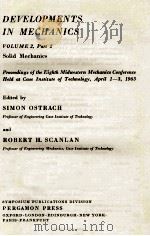
- DEVELOPMENTS IN MECHANICS VOLUME 2 PART 2 SOLID MECHANICS
- 1965 SYMPOSIUM PUBLICATIONS DIVISION PERGAMON PRESS OXFORD
-

- THE THEORY OF THE RELATIVITY OF MOTION
- 1917 UNIVERSITY OF CALIFORNIA PRESS
-

- RELATIVITY THE SPECIAL AND GENERAL THEORY
- 1921 HENRY HOLT AND COMPANY
-
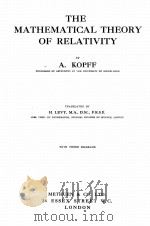
- THE MATHEMATICAL THEORY OF RELATIVITY
- 1923 METHUEN AND CO. LTD.
-
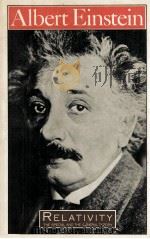
- Relativity The Special and the General Theory
- 1961 Methuen & Co LTD
-
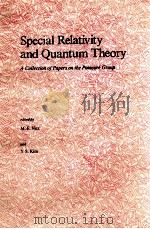
- SPECIAL RELATIVITY AND QUANTUM THEORY
- 1988 KLUWER ACADEMIC PUBLISHERS
-

- INTRODUCTION TO THE THEORY OF RELATIVITY
- 1950 CHIAO DAH BOOK SERVICE
-
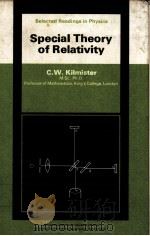
- SPECIAL THEORY OF RELATIVITY
- PERGAMON PRESS
-
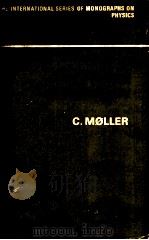
- THE THEORY OF RELATIVITY SECOND EDITION
- OXFORD UNIVERSITY PRESS
-

- INTRODUCTION TO SPECIAL RELATIVITY
- 1982 CLARENDON PRESS
提示:百度云已更名为百度网盘(百度盘),天翼云盘、微盘下载地址……暂未提供。➥ PDF文字可复制化或转WORD

